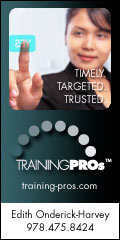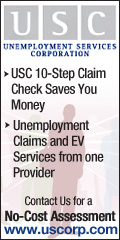NEHRA News
Northeast Human Resources Association
According to population studies, a typical employee population is made up of 65% with 0-2 health risks (e.g., depression, stress, high glucose, weight, smoking, blood pressure and physical activity, etc.), 25% have 2-4 risks and 15% have more than 5 risks.1 The argument is that since the high risk population is so costly, namely, 20 percent of the high risk population is responsible for over 80 percent of an employer's healthcare costs2, it would seem to make sense to focus solely on this population and drive these costs down. However, this is a mistake. It is equally important to keep the healthy people healthy.
Here are the facts: diabetes, heart disease, obesity, and other costly conditions can be prevented when people engage in healthy behaviors day after day, year after year. In fact, 87.5% of health care claims costs are due to an individual’s lifestyle3. Furthermore, research tells us that, our health, if ignored, deteriorates as we age; we lose muscle mass, our metabolism slows (so our weight increases), we lose bone mass and our blood pressure increases. But if you can keep people exercising, eating well and dealing with stress appropriately, you can very likely avoid or mitigate the ill effects of aging. This is why it is JUST AS important to focus your wellness program on engaging all employees, not just the high-risk ones.
Another factor to consider is that there are over 80 million baby boomers that will hit 50/60 years of age this decade so we should try to reach out to them before they end up in the high risk category. In fact, a cost savings of $350/person/year is realized by organizations for each employee who, while they don’t improve their health, do not add any risk factors during that year!1
How do you develop a wellness program that keeps the healthy employees healthy while helping the unhealthy employees become healthy? You need to develop wellness programs that engage the entire employee population. Imagine your employees’ response when you announce that your entire wellness budget is going to a program that only targets the very overweight people in your population and ignores those that are already doing the right thing or even worse, ignores those that are at a healthy weight but who still smoke! "Hey! I want to win a iPad too!"
If resources are limited (and whose aren’t?), the best plan is to design programs that can engage various segments of your population. By focusing on overall wellness, you can achieve several goals. You can create a culture of health in the workplace, promote personal responsibility, support the important relationship between lifestyle choice and good health, provide inspiration and modeling from the healthy employees and reward employees for maintaining as well as for striving for healthy lifestyle behaviors. For example, a team wellness challenge could reward non-smokers, but also provide incentives and rewards for those who are striving to quit. In this way, you are able to meet individuals where they are and thus more participants are likely to engage and feel connected to the program. Similarly, if you can design a wellness challenge that rewards those who are already at a healthy weight as well as those who are losing weight at an appropriate rate of weight loss (1-2 pounds per week), it is a win win for all.
How do you get the most bang for your buck in addressing the various populations segments? Encourage weight management and physical activity. Helping individuals to learn to manage their weight over time and stay within a healthy range by adopting healthy habits including portion control, and regular physical activity may help both the weight loss group as well as the weight maintenance seekers. The 2010 Dietary Guidelines for Americans recommends individuals "maintain calorie balance over time to achieve and sustain a healthy weight. People who are most successful at achieving and maintaining a healthy weight do so through continued attention to consuming only enough calories from foods and beverages to meet their needs and by being physically active."4 Furthermore, the Guidelines suggest "maintaining a healthy body weight and preventing excess weight gain throughout the lifespan are highly preferable to losing weight after weight gain. Once a person becomes obese, reducing body weight back to a healthy range requires significant effort over a span of time, even years."5
Encouraging physical activity through ‘take the stairs’ campaigns, establishing walking routes around your workplace (indoors as well, if size allows) and via a pedometer or accelerometer based walking program, or a wellness challenge have all been proven successful in increasing physical activity in various populations. And the research also documents a financial gain – as if employee health wasn’t enough! Programs that motivate individuals to increase physical activity save organizations approximately $900/person/year in direct medical costs2 and regular physical activity can reduce medication use, hospitalizations, and unnecessary physician visits.1
Want to bring your walking challenge out of the dark ages? Go high tech and make it fun! Many employees embrace technology and this can be used to motivate people to increase their physical activity and/or track the food they eat throughout the day. There are apps available for iPhones, that include Map My Run or the Walk n’ Play app, which tallies a users’ every movement over the course of a day, including walking and climbing stairs, and translates it to calories burned. The game gives an accurate calorie count thanks to a biomedical calibration process applied on the iPhone’s accelerometer that senses motion and can be made to measure metabolic activity. (Of course, you have to keep your iPhone with you throughout the day in order for this app to be beneficial.)
Going hand in hand with tracking physical activity is calorie counting. In order to lose weight, you need to consume fewer calories than you burn. There are several online sources for calorie counting, like CalorieKing (for a fee) or SparkPeople (free). An iPhone app, called LoseIt, is also available for free and is a nice app for people who are often travelling or away from their computer (or addicted to their Smartphone!). The blackberry has a similar app called FatSecret, which users can purchase.
Ideally, though, you would like to offer your employees an opportunity where they can track, view and possibly have a coach monitor their calories consumed and calories burned, if resources allow. At Wellness Workdays, we use a Personalized Employee Dashboard (PED) (see screen shots by clicking on the following link - PED Dashboards) to do just that and are getting great results since we began using the technology 9 months ago. Participants wear an accelerometer, which is similar to a pedometer. However, instead of simply tracking steps, the accelerometer measures calories burned because it can sense motion in six different planes. You can wear it walking, hiking, biking, strength-training, etc and it will capture all of these movements and translate it to calories burned. You then upload this data to the PED and have the ability to view graphs of your activity levels throughout the day/week/month.
Another feature of the dashboard is the option to track your food consumption throughout the day. There is an extensive database of food options from which to choose. At the end of the day, the employee is able to see how many calories they burned and, if they tracked their food intake, how many calories they ate. The PED can also be equipped with a workstation where employees can monitor body fat and weight. The dashboard makes it incredibly simple for employees to keep track of all of the necessary components for weight loss or weight maintenance. In fact, one employee at one of our clients, lost 75 pounds just by following the guidelines set up for him on the dashboard!
Keeping employees at a healthy weight or moving employees to a healthy weight is an important part of a wellness program. High BMI (body mass index) individuals cost an average of $2326 (1996 dollars) more in annual health claims compared to healthy BMI individuals8. These types of technology can be incorporated into wellness challenges in order to provide verifiable data or they can be used as stand alone programs, where employees are asked to meet certain daily calorie burn goals or certain body fat goals.
Whether you are just starting a wellness program or hoping to make improvements to the one you currently have, make sure you have programming that will appeal to and engage all of your employees. This means running different programs throughout the year and using different approaches (i.e. sometimes offering a program that incorporates technology and sometimes offering an onsite workshop). Just make sure you are focusing on keeping all of your employees healthy, not just the high risk ones! Your employees (many more of them) will thank you!
About the Author
Debra Wein, MS, RD, LDN, CSSD, CWPD is a nationally recognized expert on health and wellness and has designed award winning programs for both individuals and corporations around the world. She is president and founder of Wellness Workdays, (www.wellnessworkdays.com) a leading provider of corporate wellness programs. Debra has nearly 20 years of experience working in the health and wellness industry. Debra’s interests include bringing the latest developments in nutrition, fitness and wellness to her clients and anyone who will listen. Her goal is to inspire individuals to make simple and positive changes in their lives that improve their lives. Join the wellness conversation on Facebook. Search for Wellness Workdays.
Selected Sources:
1. Edington, D. Zero Trends: Health As a Serious Economic Strategy. Health management Research Center, (Ann Arbor), p. 40. 2009.
2. Agency for Healthcare Research and Quality. Retrieved July 18, 2011 from http://www.ahrq.gov/research/ria19/expriach1.htm.
3. Schroeder S.A. Indiana University-Purdue University, Fort Wayne (IPFW) Study. NE Journal of Medicine. 2006
4. 2010 Dietary Guidelines for Americans Executive Summary. Retrieved July 18, 2011 from
Publications DietaryGuidelines/ 2010 PolicyDoc.
5. Balancing Calories to Manage Weight. 2010 Dietary Guidelines for Americans. Retrieved July 19, 2011 from 2010 Dietary Guidelines.
6. Anderson, D. ROI Bullseye Building a First Class Workforce. Wellness Councils of America (WELCOA) Absolute Advantage, 2(5): 5-9, 2003.
7. Chronic Disease Prevention Overview. Centers for Disease Control and Prevention, 2005. Retrieved July 17, 2011 from http://www.cdc.gov/nccdphp/overview.htm#3.
8. Long DA, Reed R, Lehman G. The cost of lifestyle health risks: obesity. Journal of Occupational and Environmental Medicine, 48(3):244-251. 2006.
Since its doors opened with one store in 1971, Starbucks has become one of the top known brands in the world. Under the leadership of Howard Schultz, the brand has grown to amass over 17,000 stores worldwide. People don’t just admire Starbucks for its coffee; the brand is admired for its reputation as an employer. The admiration of the company’s culture has undoubtedly been a force in the company’s quick growth.
This culture was no mistake; as Schultz describes, he set out to create a culture that focused on its employees. Seeing his blue-collar parents work hard and receive little respect in return, Schultz sought to value and respect his employees. By walking the floors of the company’s roasting plants and praising employees, he created a pillar example of how to build a culture "for the people," and to ultimately profit from it.
As many senior HR leaders know, not every CEO shares the sentiment of Howard Schultz. HR often plays a backseat role when compared to finance, marketing, engineering, or other functions. While CEOs know that HR is important, it’s often not given a seat at the table. Senior HR leaders, as "keepers of the people," need to establish credibility for themselves and earn that seat at the table; for themselves and for the employees they represent.
CEOs need to rely on their CHROs to maximize the company’s return on its investment in people. By strategically becoming an advisor to the CEO, top HR leaders can achieve this, and in turn advance their own career goals. Developing a powerful presence at the overall C-level will help CHROs extend this credibility with the rest of the leadership team. Communication skills are at the core of each of these essential leadership strategies.
Trusted Advisor to the CEO
As individuals known for exercising discretion, CHROs have the correct disposition and people skills to advise CEOs on the most sensitive subjects. As trusted partners with other executives and as advocates for employees, CHROs have access to valuable insights that other executives simply do not. The art of the CHRO leader is balancing the trust they have with the company’s important constituents, with the need to advise the CEO on information that he/she must have to make sound strategic decisions.
The smartest CEOs surround themselves with people they trust and know will give it to them straight. CEOs want leaders who are credible - meaning they are honest, forward-looking, skilled and inspiring. As a trusted advisor, your job is to engage and help energize the leader of your organization; to broaden your CEOs perspective and help him/her with insights that are critical to understand and consider.
As a trusted advisor you must be able to communicate important insights effectively. CEOs hear about problems all day long and they sit in meetings where they view presentations both formal and informal. They have a strategic focus and very limited time, so they are constantly prioritizing input and actions to determine where to focus and how to invest valuable resources.
As a business strategist and valued advisor, you are obligated to get to the "big idea" quickly. The "big idea" is one that your CEO instantly recognizes, and something that immediately conveys what the business needs. When this is a "game changer", you’ve demonstrated your understanding of the big picture, aligned yourself with your CEO’s strategy and priorities and saved valuable time. The most trusted advisors are those whose big ideas are compelling, and communicated clearly and concisely.
Presence at the C Level
Like their C-level peers, CHROs must demonstrate their expertise in their functional area, but that does not always translate into leadership and executive presence. Presence goes much further than technical expertise and business acumen. Presence involves a combination of factors such as professional image, cachet and your ability to think strategically and build influence. Like respect, presence is earned. Leaders who have presence become peer leaders at the C level. They are authentic, consistent, reliable and engaging. They balance their significant power with a genuine concern for others.
These are all traits that are internal to the leader. Unless you start by clarifying your values, you cannot communicate with authenticity. There are equally important traits for executive presence that are external – when these skills are mastered they complete your ability to communicate powerfully, with purpose and passion.
Today’s CHROs need communication skills that go far beyond the ability to simply present well. The CHRO must be able to communicate directly and indirectly with functional and business unit leaders to build trust, offer insight and discover major issues before they are out of control. You must understand the "question behind the question," and influence decisions throughout the process.
Executive presence is the ability to ask great questions, the communication skills necessary to relate to all styles of decision makers and a leadership brand that gains their trust.
In your critical role as a "Keeper of the People" within your organization, you have an unprecedented level of pressure on your overall leadership and communication ability. Your ability to communicate powerfully will help you gain credibility and earn that "seat at the table" for yourself and for your people.
For a full report on the 7 leadership skills of successful CHROs, visit www.bates-communications.com/special-reports/.
About the Author:
David Casullo is President of Bates Communications, Inc., a national consulting firm specializing in leadership communication skills and strategy. The firm specializes in executive coaching, workshops, boot camps, and consulting. David is the author of the upcoming book Leading the High Energy Culture, which will be published with McGraw Hill in 2012. Prior to joining Bates Communications, David served as the Vice President of Human Resources for the national retailer Raymour & Flanigan.
The John D. Erdlen Scholarship is awarded to the outstanding scholarship applicant. The scholarship is for $3,000 is awarded to a full-time undergraduate or graduate student at an accredited college or university. In addition to the award the recipient also receives a one-year NEHRA student membership. The Erdlen Scholarship can be received by a previous scholarship winner.
The Future Stars in HR Scholarship is awarded each year to a deserving full-time undergraduate or graduate student at an accredited college or university preparing for a career in human resources. This award is in the amount of $2,500.
Application information is available by CLICKING HERE. All applications and required attachments must be received at the NEHRA office no later than September 6, 2011. Final applicants will be interviewed by the NEHRA College Relations Committee and winner will receive their award at the NEHRA Annual Awards Breakfast on September 22, 2011.
Applications should be sent to:
Northeast Human Resources Association
Future Stars in HR Scholarship Awards
303 Wyman Street, Suite 285
Waltham, MA 02451
It will also ensure that your information is correct in the Member Directory. Once you log in, go to the "About NEHRA" tab and select Membership Directory and then click on Update my Membership Profile.
While you are updating your profile, you might want to consider joining one of the Community Forums or adding your name to one of the Listservs. An updated profile and connecting to one of the NEHRA Communities is a great way to maximize your membership and create your personal network.
If you need help with this process please do not hesitate to contact Carole Edson, Director of Membership, at cedson@nehra.com.
- To become a fan of NEHRA on Facebook, CLICK HERE.
- If you are already a member of LinkedIn, CLICK HERE to join the NEHRA LinkedIn Community!
If you are not already a member of LinkedIn, you will need to follow the easy steps to create your profile. Once your profile is completed you can follow the steps below to become a member of the Northeast Human Resources Group.
- Find the tab for "Groups" on your home page and select "Group Directory."
- Use the search function in the upper right and type in "Northeast Human Resources Association."
- Click on "Join this Group."
- This will bring you to a description of the group and you will be asked to make selections about your preferences for display the group logo on your personal page.
- Enter a contact email address, a digest e-mail address, delivery frequency, announcements and messages.
- Once you have made these choices click the button "Join Group."
- Your message will come to the NEHRA Group Administrator to verify membership and approve you for the group.
To Join a Community Forum Subgroup on LinkedIn
- Once you are a member of the Northeast Human Resources Group, select "Subgroups."
- Select all the groups you are interested in joining.
- Your request goes to the NEHRA Group Administrator for approval.
- You will receive a message that you are a member of this subgroup and you can begin to read and post information on the Subgroup page.
Current NEHRA Subgroups
- Learning and Development Community Forum
- Diversity and Inclusion Community Forum
- Consultants Community Forum
- Small Business HR Community Forum
- HR Technology Community Forum
- Talent Acquisition Community Forum
- Flexible Workplaces Community Forum
For more information or to sign up for this opportunity, contact the NEHRA office today at (781) 235-2900 or via email at info@nehra.com.



